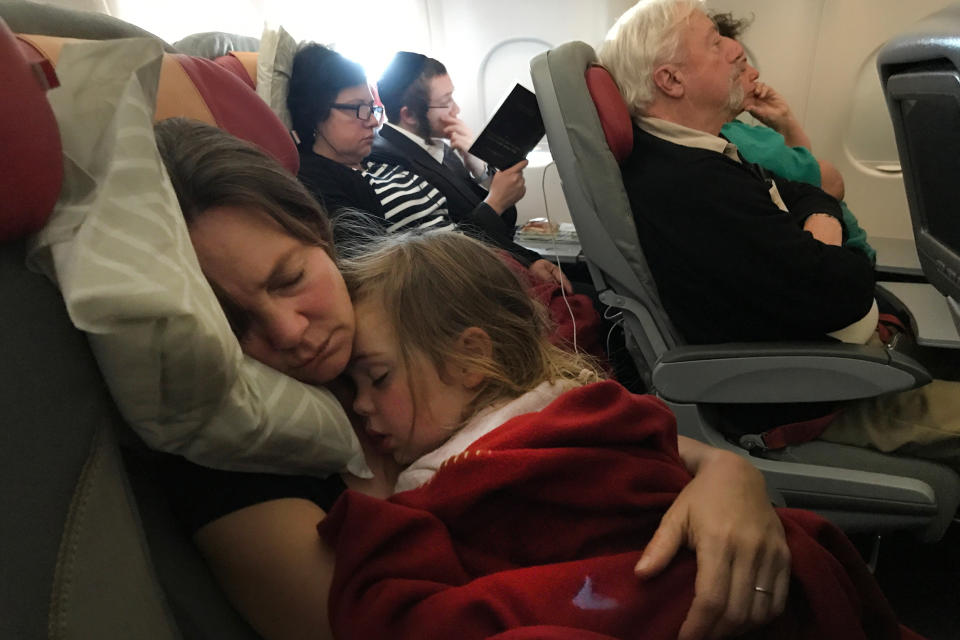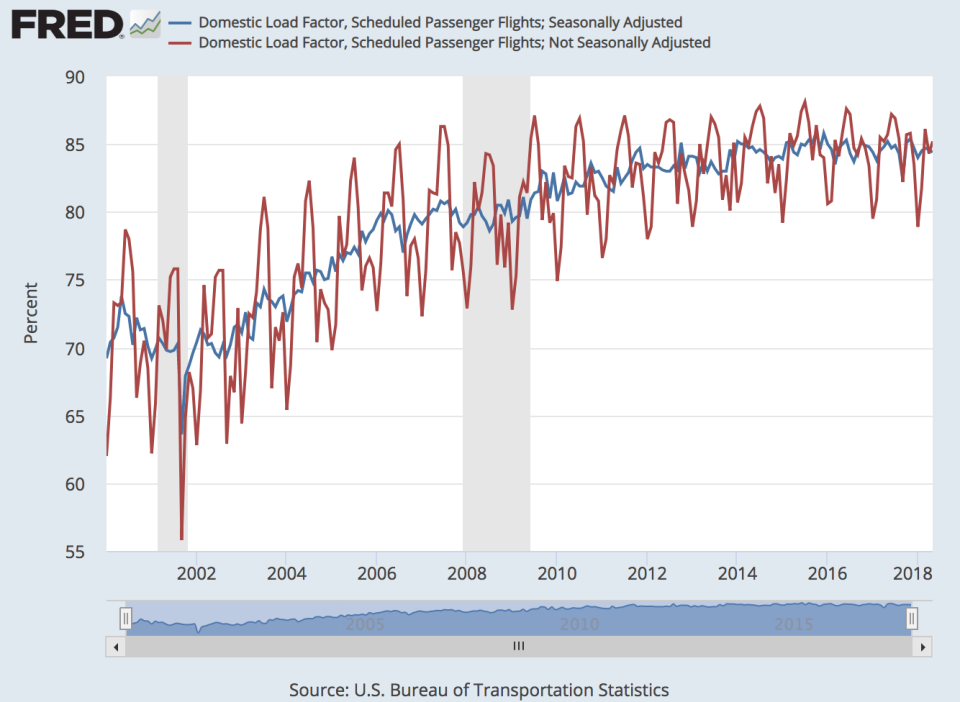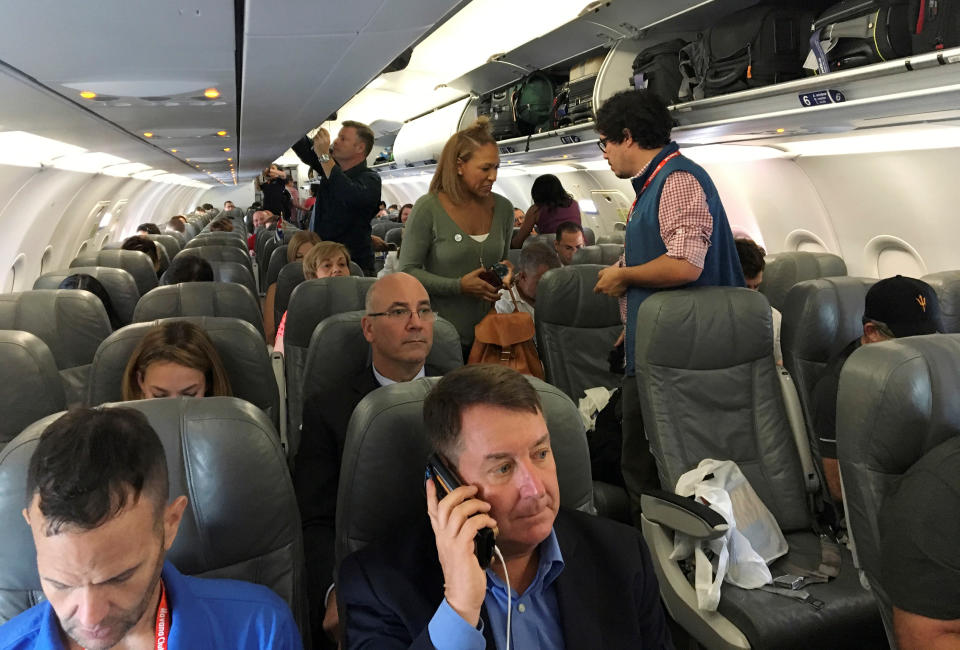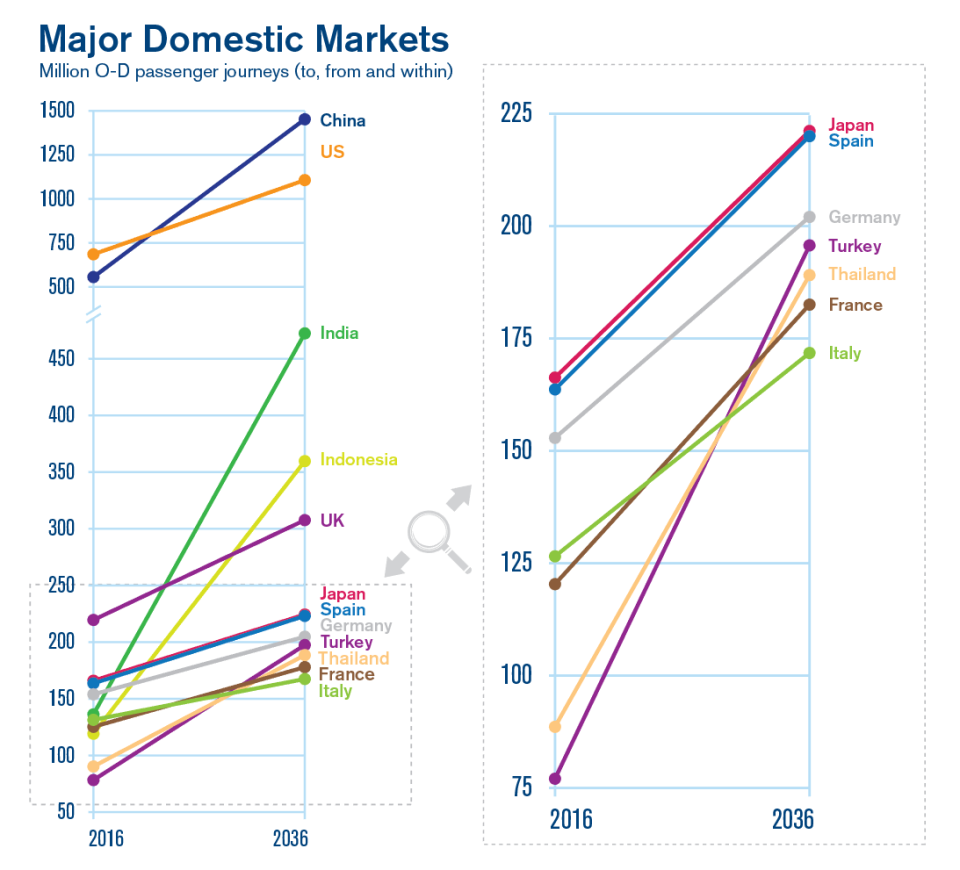Planes are ridiculously crowded these days, and a pilot explains why
Passenger flights are becoming more crowded each year.
Nearly 849,000,000 people flew on U.S. carrier airplanes in 2017, a 13 percent increase since 2005, according to U.S. Bureau of Transportation statistics. At the same time, there were nearly 1.6 million fewer flights last year compared to 2005 — a 13 percent decrease.
Bob Seidel, CEO of Alerion Aviation and an experienced pilot, attributes this to a shortage of pilots.
While scheduled routes stay the same, he said, the frequency of an airline flying those routes each day have decreased to ensure that they can be flown with appropriate crewing. And the passenger load factor — the average percentage of airplane seats occupied across all flights — has increased to about 85 percent.

“Airlines operate on load factor to ensure that the routes they fly and the frequency is not below breakeven,” Seidel told Yahoo Finance. “They calculate this by measuring revenue passenger miles and use available seat miles to determine an acceptable average load factor.”
In the 21st century, the acceptable percentage of seats filled on U.S. carrier flights has risen by about 15 percent.

‘A terrible, crowded, delayed, hot, smelly experience’
More people with fewer seats means that planes are becoming increasingly crowded: The average plane contains 91 passengers, a 32 percent jump from a decade ago, according to Forbes.
“There was a time when not every plane was a hundred percent full,” Yahoo Finance’s Myles Udland said on The Final Round (video above). He added that “as someone who did not fly as a child and only really began flying when I hit late high school, college age, I’ve only ever known flying as a terrible, crowded, delayed, hot, smelly experience.”
To make it worse, airline carriers are reducing “pitch,” which is the distance from one seat to the one in front of it in order to fit in extra rows. Forbes reports that “pitch” has shrunk in coach sections from 34 inches to around 31 inches, or sometimes even less. This allows airlines to fit more seats.

Most passengers won’t be financially affected, as competitive airline pricing and newer, more efficient aircraft make flying easier. Seidel noted that there is only a reduction in the frequency of routes, which means that passengers just need to adjust their schedules or spend extra nights on the road.
“There won’t be much of an effect for the common routes, such as New York City to Miami, because those are serviced by multiple airlines that give the customer scheduling flexibility,” Seidel said. “It’s going to affect customers that fly to ‘non-hub,’ or rural destinations, more.”
And fewer flights can sometimes mean higher prices. Udland noted that “You can only get from [New York City] to Cleveland like three times a day for $500. That used to be a much more popular flight.”
‘This is a phenomenon that is going to stay’
The International Air Transport Association estimates that the North American region “will grow by 2.3% annually and in 2036 will carry a total of 1.2 billion passengers, an additional 452 million passengers per year.”

According to Seidel, global trade and the competition-driven low cost of airline travel are the primary reasons why passenger count continues to increase.
“While electronic communications make it easier to hold meetings, there is still a greater requirement for business travel,” he said. “Technology has allowed companies to spread out, and rather than decrease travel, it has increased.”
Given the increasing demand, Boeing’s (BA) latest Pilot and Technician Outlook states that North America alone will need more than 200,000 pilots over the next two decades to keep up. In the meantime, planes will be ridiculously crowded.
“This is a phenomenon that is going to stay for quite some time until the industry can address the pilot shortage issue at the root levels,” Seidel said.
Follow Adriana on Twitter.
Read more: The global pilot shortage is getting worse

